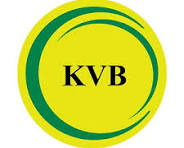- Demand from semi-urban and rural regions continued to hold steady even as retail credit demand from younger consumers declined in the quarter ending June 2025
- Credit portfolios rebalanced in favour of secured products, transitioning from consumption to collateral-backed lending, with loan against property balances increasing 23% year-over-year (YoY)
- Portfolio quality improved for most products, though emerging risks are visible in certain segments
Bengaluru, 24 September 2025 – India’s retail credit market saw a cyclical shift marked by contrasting trends in consumer demand and portfolio performance during the quarter ended June 2025. While credit demand from younger consumers (aged 18–35) declined during the quarter, semi-urban and rural regions continued to demonstrate resilience, with demand rising in these geographies.
According to TransUnion CIBIL’s September 2025 Credit Market Report, the growth in loan originations for younger consumers slowed to 6% in the quarter under study, compared to 9% in the same period last year. This slowdown was cushioned to some extent by a robust 9% YoY growth in loan origination volumes from rural and semi-urban regions, reflecting stable consumption patterns outside metro areas.
These trends contributed to a lower Credit Market Indicator (CMI)1 of 98 for the first quarter of the 2025-26 financial year in comparison with same period for the previous financial year. The CMI is a comprehensive measure of data elements that are summarized monthly to analyse changes in credit market health, categorized under four pillars: demand, supply, consumer behaviour, and performance. These factors are combined into a single, comprehensive CMI indicator, and pillars can also be viewed in more detail individually. A higher CMI reading indicates improving credit market health, while a lower reading indicates a decline.
Chart 1: Credit Market Indicator (CMI) June 2022 – June 2025
“India’s credit landscape is evolving with resilience in semi-urban and rural demand, a strategic shift toward secured lending, and stable portfolio performance. These trends signal a maturing market focused on sustainable and inclusive growth,” said Mr. Bhavesh Jain, MD & CEO, TransUnion CIBIL.
Retail Credit Demand Impacted by Tapered Demand from Younger Consumers
The slowdown in demand from younger consumers led to the CMI for demand falling to 92 for the quarter ended June 2025, down from 95 the same time last year.
The share of demand from young consumers (age 18-35 years) as a percentage of total demand fell to 56% in the June 2025 quarter, compared to 58% in same period a year ago. Demand is measured as enquiry volumes.
Personal loans, consumer durable loans and gold loans remained popular among this age group, while credit cards saw a YoY decline. The overall decline in supply was especially visible in metro and urban geographies, where the share of young consumers in loan originations has decreased by 3% over the last two years. Supply is measured as originations by lenders.
Chart 2: CMI Demand June 2022 – June 2025
Younger consumers often start their credit journey with products that offer convenience, like personal loans, consumer durable loans, or credit cards. As they progress through life stages, there tends to be a natural shift toward secured, long-term credit options that better suit their evolving needs.
“The recent dip in credit demand from this segment may reflect a more cautious mindset. While this may be temporary, it is a reminder of how important it is to equip young borrowers with the right tools and support to help them grow confidently along their credit journey,” said Mr. Jain.
Semi-Urban and Rural Regions Continued to Demonstrate Growth
In comparison, semi-urban and rural geographies continued to show robust growth, with a 9% YoY increase in originations for the quarter ended June 2025, indicating deepening credit penetration and resilience in non-metro consumption. The most significant originations growth, by 15% YoY, was in personal loans – a greater growth rate than those seen for other leading products in these geographies such as gold loans (7% YoY) and consumer durable loans (9% YoY).
Lenders have an opportunity to tap into resilient pockets of growth, particularly in semi-urban and rural regions, where credit demand continues to hold strong. By tailoring products and outreach to these markets, and by nurturing responsible credit behavior among younger consumers, lenders can drive inclusive and sustainable growth.
Retail Credit Growth Remains Flat Across Most Products
The CMI for credit supply remained unchanged at 93 for the quarter ended June 2025. Origination volumes growth was flat for key products, except personal loans, which saw 12% YoY growth, and gold loans, which saw 8% YoY growth.
Home loan origination volumes also grew, by 2% YoY, compared to a 3% YoY decline for the same period a year ago. In value terms, home loan originations increased by 6% YoY in the quarter ended June 2025, marginally higher than the 5% YoY in the quarter ended June 2024.
For two-wheeler loans, origination volumes fell by 1% YoY in the quarter ended June 2025, in contrast to a 15% YoY growth in the same period a year ago, while in value terms two-wheeler originations saw a slower growth of 3% YoY compared to a growth of 21% YoY in the same period a year ago.
Chart 3: CMI Supply June 2022 – June 2025
Similar to credit demand, the share of semi-urban and rural consumers in loan originations also saw a marginal one percentage point YoY increase to 61% for the quarter ending June 2025.
In its June 2025 monetary policy, the Reserve Bank of India (RBI), announced a 50 basis point (bps) cut in the repo rate—higher than market expectations. As the repo rate serves as the benchmark for banks and financial institutions to set their lending rates, this reduction translates into lower interest rates on both retail and commercial loans. Furthermore, the central government’s decision to streamline GST slabs to 5% and 18%, for most commodities, down from the previous ranges of 5% to 40%, will reduce the cost of a wide array of commodities—from essential goods to vehicles.
The recent rate cuts combined with the reduction in Goods and Services Tax (GST) rates and increased demand due to the upcoming festive season, are expected to boost consumer spending and stimulate lending momentum.
Lenders Tilt Towards Secured Lending as Risk Appetite Evolves
Portfolio balances grew at a slower pace of 18% YoY in the quarter ended June 2025, compared to 25% YoY a year ago. While this deceleration was visible across all product segments, it was more pronounced for unsecured products such as personal loans (8% YoY), consumer durable loans (8% YoY) and credit cards (12% YoY).
As a result of slower growth in unsecured products, the credit active consumer base saw a slower growth of 9% YoY during the quarter ended June 2025, compared to 15% YoY in the quarter ended June 2024. This has led to the CMI for consumer behaviour declining to 94 in the quarter ended June 2025, compared to 111 for the same period last year.
The outstanding balances of secured products continued to grow by double digits, although all at a slower pace than in the same quarter a year ago, with the most significant growth being for loans against property, which increased by 23% YoY, and gold loans, which increased by 26% YoY.
Table 1: Outstanding Balances YoY Growth
| Product | June-25 | June-24 | |||
| Home Loan | 13% | 15% | |||
| Loan Against Property | 23% | 25% | |||
| Auto Loan | 16% | 23% | |||
| Two-Wheeler Loan | 14% | 33% | |||
| Personal Loan | 8% | 20% | |||
| Credit Card | 12% | 28% | |||
| Consumer Durable Loan | 8% | 32% | |||
| Gold Loan | 26% | 60% |
As portfolio growth moderates, the strategic pivot towards secured lending, highlighted by the robust performance of loans against property, reflects a conscious effort by lenders to drive credit expansion while managing risk. This signals a maturing credit environment where sustainability and stability are prioritized over volume growth.
Stable Portfolios with Pockets of Stress Requiring Focused Oversight
Overall retail credit balance-level delinquencies across higher-balance products remained stable, indicating sound portfolio health. This led to the CMI for performance improving to 104 in the quarter ending ended June 2025, compared to 101 in the quarter ending ended June 2024.
Among consumption products, personal loans continue to demonstrate YoY improvement in 90+ days past due (DPD) performance. Credit card delinquencies rose 19 basis points (bps) YoY although they have remained range-bound over the past four quarters, suggesting relative stability despite the slight uptick.
Certain other loan segments, too, have seen a rise in 90+ DPD delinquencies. These include two-wheeler loans (up 20 bps YoY), unsecured business loans (up 42 bps YoY), and commercial vehicle loans (up 50 bps YoY). Together they account for 6% of the industry portfolio.
“Proactive portfolio monitoring in certain segments such as two-wheeler loans, unsecured business loans and commercial vehicle loans along with strengthening risk frameworks, is essential for inclusive growth,” said Mr. Jain.
 Newspatrolling.com News cum Content Syndication Portal Online
Newspatrolling.com News cum Content Syndication Portal Online







